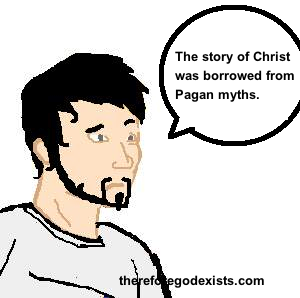 In his tale The Da Vinci Code, Dan Brown mounted heavy charges against the biblical narratives, cutting at the core of the Christian faith. His characters, who were scholars from Oxford and Harvard, criticized the early Christians for manufacturing the deity of Christ, changing the Scripture, removing the prevalence of Mary Magdalene, all for their own power and claim in the marketplace of religious ideas. Yet, in Brown’s tall tale, throughout the history of the church, there have been those who remained true to the real story of Christ, protecting the secret which would unravel the biblical narrative and leave the church (particularly the Roman Catholic Church) in ruins. Hence, the church has labored to keep the true story of Christ hidden from the generations and the eyes of the masses. Yet, while the story of his characters is a work of fiction, Brown alleges that the biblical history that he purports is legitimate history. So we are left with a legitimate question: is The Da Vinci Code right about the Bible?
In his tale The Da Vinci Code, Dan Brown mounted heavy charges against the biblical narratives, cutting at the core of the Christian faith. His characters, who were scholars from Oxford and Harvard, criticized the early Christians for manufacturing the deity of Christ, changing the Scripture, removing the prevalence of Mary Magdalene, all for their own power and claim in the marketplace of religious ideas. Yet, in Brown’s tall tale, throughout the history of the church, there have been those who remained true to the real story of Christ, protecting the secret which would unravel the biblical narrative and leave the church (particularly the Roman Catholic Church) in ruins. Hence, the church has labored to keep the true story of Christ hidden from the generations and the eyes of the masses. Yet, while the story of his characters is a work of fiction, Brown alleges that the biblical history that he purports is legitimate history. So we are left with a legitimate question: is The Da Vinci Code right about the Bible?
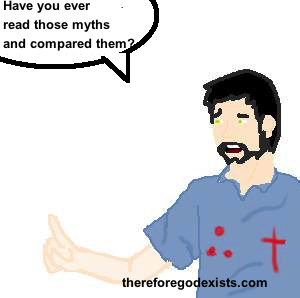 Was the story of Christ borrowed from Pagan mythology? The discovery of this claim was the first indication that the case Brown’s characters had was less than sophisticated, to put it mildly. It is quite inadequate for this view to be purported by an Oxford historian. It is akin to a historian of US history denying that the Americans kept slaves. For one to claim that Christ was borrowed from Pagan mythology is to breathe life back into an idea that was introduced and quickly abandoned by the History of Religions school. Among scholars in the relevant field, it has been utterly abandoned. It is defended only on the blogosphere and in popular level fiction literature.
Was the story of Christ borrowed from Pagan mythology? The discovery of this claim was the first indication that the case Brown’s characters had was less than sophisticated, to put it mildly. It is quite inadequate for this view to be purported by an Oxford historian. It is akin to a historian of US history denying that the Americans kept slaves. For one to claim that Christ was borrowed from Pagan mythology is to breathe life back into an idea that was introduced and quickly abandoned by the History of Religions school. Among scholars in the relevant field, it has been utterly abandoned. It is defended only on the blogosphere and in popular level fiction literature.
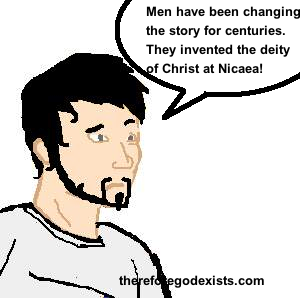 On page 252 of The Da Vinci Code, Leigh Teabing said, “Don’t get a symbologist started on Christian icons. Nothing in Christianity is original,” and he goes on to compare Christian claims with Mithras, Osiris, and the various Pagan myths spread through history. Anybody who has spoken with a fourteen year old atheist for a moment has heard this presentation. The problem is that the examples are spurious. There is a reason that proponents of this view never cite the original sources. They have not read them. Is The Da Vinci Code right about the Bible? The original sources that tell the stories of these Pagan deities are not at all comparable to the story of Christ. These comparisons are manufactured.
On page 252 of The Da Vinci Code, Leigh Teabing said, “Don’t get a symbologist started on Christian icons. Nothing in Christianity is original,” and he goes on to compare Christian claims with Mithras, Osiris, and the various Pagan myths spread through history. Anybody who has spoken with a fourteen year old atheist for a moment has heard this presentation. The problem is that the examples are spurious. There is a reason that proponents of this view never cite the original sources. They have not read them. Is The Da Vinci Code right about the Bible? The original sources that tell the stories of these Pagan deities are not at all comparable to the story of Christ. These comparisons are manufactured.
Further, there is just no causal connection between the early disciples of Jesus and these myths. These men were devout Jews, and these Pagan myths were hundreds of years old. They were known throughout Judaism and they were regarded with disdain. It is unthinkable that a Jew, or a group of Jews, would read these stories and come to believe that they had truth value, subsequently applying them to Jesus. The expectation that there would be this sort of dependence is, in a word, ridiculous.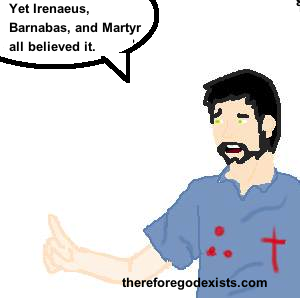
Did The Council of Nicaea Decide That Jesus Was God? This is just to misunderstand history. The doctrine of divinity was not formally established before this point, but nonetheless, the followers of Jesus prior to that believed it. We know this because we have the writings of the early Christians who came after the death of the apostles, and we have the writings of the apostles themselves. In around 100 AD, Barnabas wrote in his letter (not to be mistaken for the Gospel of Barnabas, which is proven to be fraud), that Jesus was the one to whom the Father said in Genesis 1:26, “Let us make man in our own image.” In 150 AD, Justin Martyr made significant claims about the deity of Christ, quoting John 1:1 and Hebrews 1:8 as evidence for the deity of Christ. He writes, “For if you had understood what has been written by the prophets, you would not have denied that He was God, Son of the only, unbegotten, unutterable God.” In 180 AD, Irenaeus referred to Christ as “Our Lord, and God, and Savior, and King, (Against Heresies, Book I, ch. 10, section 1). The references to the deity of Christ in the centuries prior to Nicaea are substantial. I could prattle on for twenty pages, expounding upon their writings. 
Instead, I would turn my attention to what the apostles said. Most historians regard Philippians 2:5-8 as a pre-Pauline creed that Paul implemented into his letters. (Read my article about this passage here.) He was quoting something that Christians already believed. He writes that Jesus existed in the form of God (Philippians 2:6), and went on to say that at the name of Jesus Christ, every knee will bow and tongue confess that he is Lord (v. 10). This is significant because he was quoting Isaiah 45, a passage that is referring to YHWH. Paul took this passage referring to YHWH and applied it to Jesus. Hence, Paul clearly referred to Jesus as God, and the Christians prior to Jesus knew Jesus as God who existed with the Father. Is The Da Vinci Code right about the Bible? Well it purports that the earliest Christians did not think that Jesus was God. But all of our records indicate that they did think that long before the Council of Nicaea. 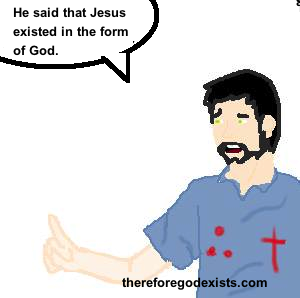
Constantine Commissioned A New Bible… Of course, in response to this, the advocate of The Da Vinci Code may reply that the biblical evidence is invalid because, as Leigh Teabing explained, Constantine changed the Bible. Teabing thought that he commissioned learned men to rewrite the letters of Paul. However, that ushers with it the presupposition that there was a controlled set of manuscripts that Constantine could just alter at will. But when people copied a letter of the New Testament, it was not for the state. It was for a household, or a town, or a church. It was not for government use. That is why we have manuscript evidence that will turn up in random places.
Further, the earliest manuscript evidence that we have of Philippians is dated between the second and the third century. That is not to say that they were originally penned in the second or third century. These letters are dated by scholars as having been written in the first century. I am particularly speaking of P16 and P46, and there is no indication that the passage that I outlined was variant. Also, the biblical data for the deity of Christ is substantial. I could have appealed to numerous texts with manuscript support that precedes Constantine.
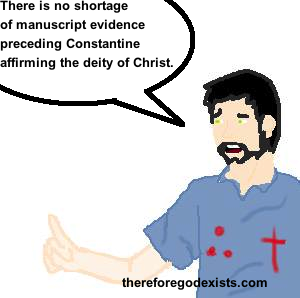 Robert Langdon (the Harvard symbologist) says of this that the evidence in favor is substantial. But in fact, there is no manuscript evidence of this change that Teabing alleged. Is The Da Vinci Code right about the Bible? If one is going to claim that these documents were altered, you have to be able to show a trail of manuscript evidence, perhaps a before-and-after presentation. But there just is nothing akin to that.
Robert Langdon (the Harvard symbologist) says of this that the evidence in favor is substantial. But in fact, there is no manuscript evidence of this change that Teabing alleged. Is The Da Vinci Code right about the Bible? If one is going to claim that these documents were altered, you have to be able to show a trail of manuscript evidence, perhaps a before-and-after presentation. But there just is nothing akin to that.
Teabing went on to say that Constantine omitted those gospels from the canon that emphasized the human traits of Christ. However, it seems that he is misrepresenting the Christian conception of Christology. We do think that he was fully man. In fact, to justify that view, we would appeal to the temptation of Christ and his distress in the Garden of Gethsemane. It seems to me that we do still have gospels that emphasize the full humanity of Christ, since that is what all Christians believe.
 The Gospel According To Mary Magdalene During the late fourth century (if I am to adopt a generously early date), the Berlin Codex was penned. It was later discovered in Egypt and revealed to be a collection of Gnostic texts, probably associated with the Coptic Church. The texts that it contained included the Apocryphon of John, The Sophia of Jesus Christ, the Act of Peter, and the Gospel According To Mary Magdalene.
The Gospel According To Mary Magdalene During the late fourth century (if I am to adopt a generously early date), the Berlin Codex was penned. It was later discovered in Egypt and revealed to be a collection of Gnostic texts, probably associated with the Coptic Church. The texts that it contained included the Apocryphon of John, The Sophia of Jesus Christ, the Act of Peter, and the Gospel According To Mary Magdalene.
Like the Gospel of Thomas (which I wrote about here) it was written in Syriac. Since the Syriac version of the gospels known as the Diatessaron had not been completed until AD 175, the Christian gospels were not available to native speaking Syrian folks until that time. Thus, most scholars think that it would be unlikely that it would be written prior to that time. Also, as I indicated, the Berlin Codex is dated around the end of the fourth century.
 Ironically, the Gospel According To Mary Magdalene was dated after the reign of Constantine. This is something that I would expect an Oxford historian of the subject to be aware of. Yet Teabing says on page 268 of The Da Vinci Code that this forbidden gospel was read by the early Christians and omitted from the canon. Is The Da Vinci Code right about the Bible? The claims that Teabing made about The Gospel of Mary Magdalene are necessarily false, because it had not been written yet.
Ironically, the Gospel According To Mary Magdalene was dated after the reign of Constantine. This is something that I would expect an Oxford historian of the subject to be aware of. Yet Teabing says on page 268 of The Da Vinci Code that this forbidden gospel was read by the early Christians and omitted from the canon. Is The Da Vinci Code right about the Bible? The claims that Teabing made about The Gospel of Mary Magdalene are necessarily false, because it had not been written yet.
Was YHWH married to Shekhinah? The word Shekhinah is not in the Bible. It is usually understood as the glory of God. This Shekhinah glory was often representative of the presence or dwelling of God. When the Israelites lost the Ark of the Covenant to the Philistines, the Shekhinah glory departed from them (1 Samuel 4:22). In this way, when the Holy Spirit dwells in a believer, it is the Shekhinah glory that is tabernacling in them. When Christ was murdered, he endured all of the punishment that we deserve for our sins. As he died, the veil in the temple was torn, and the glory of God could dwell in men. The Shekinah glory could dwell in men, and we could be born again and given the free gift of eternal life.
However, this concept that YHWH was married to another divine being named Shekhinah has no biblical support, and seems to be overturned by the strict declarations of monotheism (or even of henotheism, if one feels inclined to deny monotheism). Is The Da Vinci Code right about the Bible? While this was almost a disinterested claim, it is an interesting one and worthy of addressing and explaining the biblical model of Shekhinah glory.
The Fall of The Feminine. The underlying theme of The Da Vinci Code is that Christians undervalue women. Brown contrasts this against Pagan traditions which revere women and believe that they are the greater sex. But since men in the church wanted control, they eliminated the role of the woman. They eliminated the picture of Mary Magdalene, eliminated God’s marriage with Shekinah, eliminated the gnostic gospels that speak of Jesus’s marriage to Mary, eliminated the role of women in the church and in the household. Women became subservient to men.
I am skeptical of this characterization of historical Christendom. Much to the protest of the Protestants, Roman Catholicism reveres Mary the mother of Jesus as the Queen of Heaven. They have a feminine presence in their church, and they maintain that she answers prayers and interacts with them. They maintain that she is the path to Christ. Of course, I do not believe that. But it seems to undercut the claim that Roman Catholic Church does not revere the feminine.
It is also interesting to note that on page 457 of The Da Vinci Code, Langdon said that the fall in Genesis 3 was symbolic of the fall of the feminine. Well, I would be more inclined to believe that if Adam and the serpent did not fall as well. They were both cursed along with Eve. Further, Eve was deceived by the serpent. She was not overtaken by a power-thirsty male who pushed her into the background. It seems that Langdon (or Brown, as it were), is reading this interpretation into the Genesis story.
Is The Da Vinci Code right about the Bible? I can say confidently that no Christian should be challenged by the claims that are made. It relies on abandoned scholarship, miswriting history, and the re-dating of New Testament and gnostic manuscripts. It is an excellent piece of literature. I enjoyed it thoroughly and recommend it. I only offer the caveat that the biblical history should be taken as fiction.
If you would like to get in on the discussion about this, join my Theology Discussion Group!